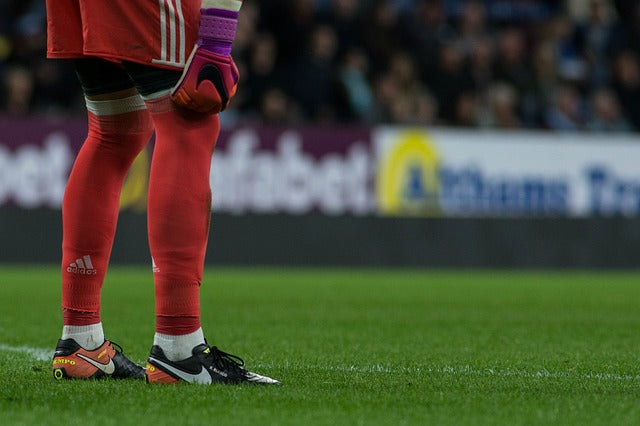Footballers put a lot of strain on their feet and legs, both in training and on match day. One of the most common injuries in football is plantar fasciitis. It can be really painful and keep a player of the field unless it’s identified and treated early.
What is plantar fasciitis?
There is a ligament called the plantar fascia that stretches across the sole of the foot, anchored at the heel. If that ligament develops micro tears and becomes inflamed, intense pain can result in the heel. If a player thinks they have football plantar fasciitis, they might see if pain can be provoked by flexing the toes upward.
How can it develop?
Because the tears occur in the plantar fascia over time, the injury may not present itself as serious at first. Pain can be dull, only lasting for a short time. The injury develops as the ligament is pushed to continue functioning without adequate time to heal.
It can develop in football players that start an intense training routine after a long time without activity, or players who spend a lot of time on their feet when not at a game.
Additional risks
Sometimes, players with football plantar fasciitis ‘play through the pain’ and ignore the injury. This can aggravate the injury quite badly. Sometimes, someone with plantar fasciitis will change their gait in order to avoid pain, but this can put unexpected pressure on the knees and hips.
How to avoid developing plantar fasciitis
A reliable warm up routine will help footballers avoid plantar fasciitis. Stretching the muscles in the feet will help the ligament prepare for the increase in activity. Wear appropriate footwear, and avoid intense training regimes when beginning a new sport.
How to treat plantar fasciitis
The most common way to heal plantar fasciitis is to rest the injured foot as much as possible. Ligaments can be slow to heal. Walking, running, jumping and other physical activities can inflame the injury further. This will extend recovery times. Supportive footwear and orthotics may be appropriate to help absorb some of the downward pressure from walking during recovery.
About Enertor Advanced Technology Insoles – Enertor insoles are designed to prevent a number of common running injuries and provide more comfort. Designed by leading podiatrists to reduce your risk of injury, the unique design features support your foot throughout training. Enertor insoles are enhanced by D3O impact protection technology, which means they can provide more shock absorption than any other insole. Our expertise, combined with the patented D3O shock absorption technology, enables Enertor to deliver the most advanced injury prevention insoles on the market today.
Enertor insoles are available to buy from our online shop .
Whilst Enertor has over 18 years Orthotics experience, our blog content is provided for informational purposes only and it is not a substitute for your own doctor’s medical advice. Enertor advises anyone with an injury to seek their own medical advice – and do not make any health or medical related decisions based solely on information found on this site.
The post Heel pain and plantar fasciitis in footballers appeared first on Enertor.

